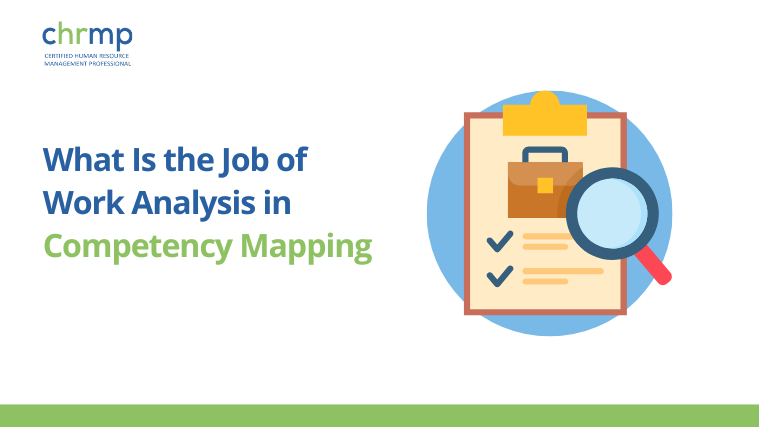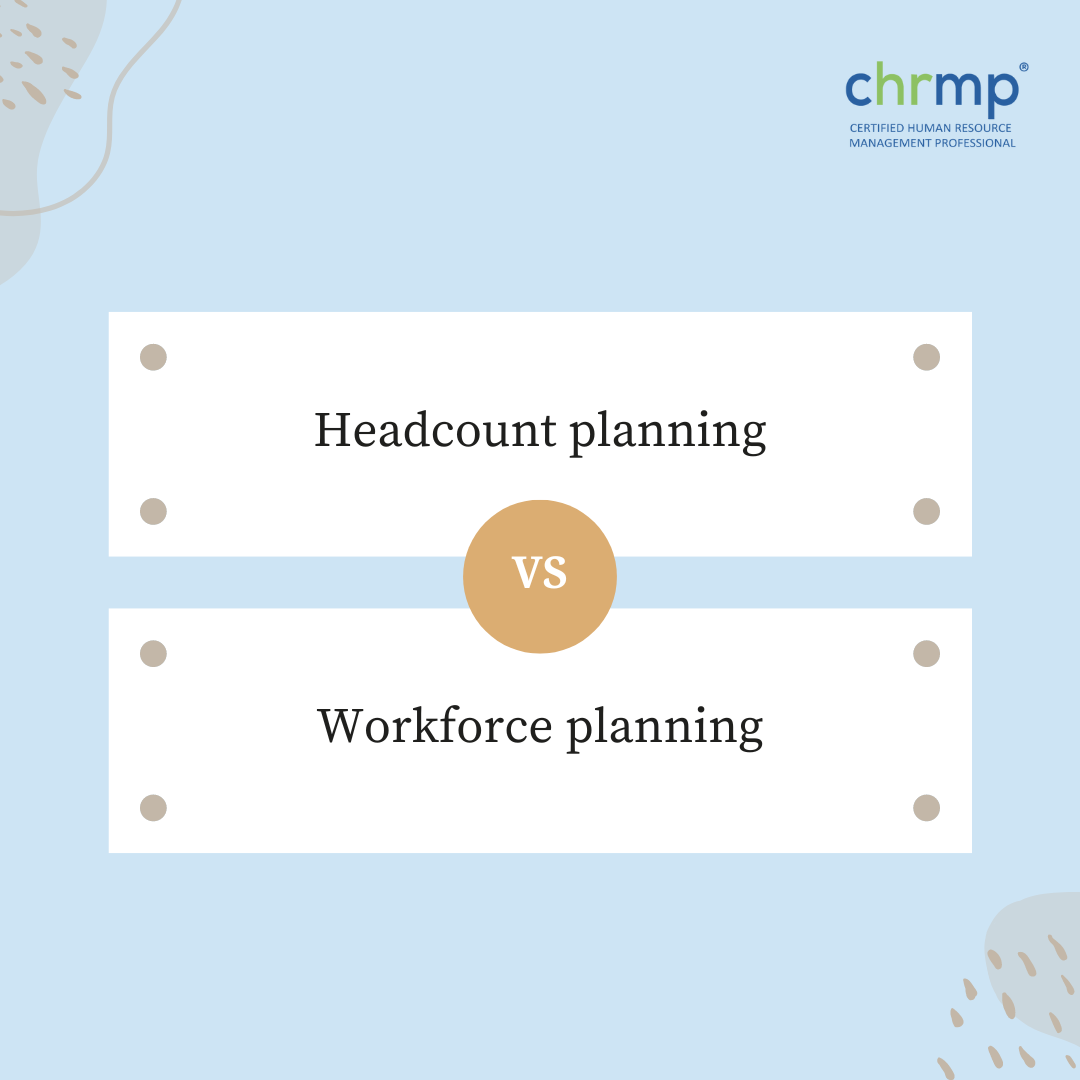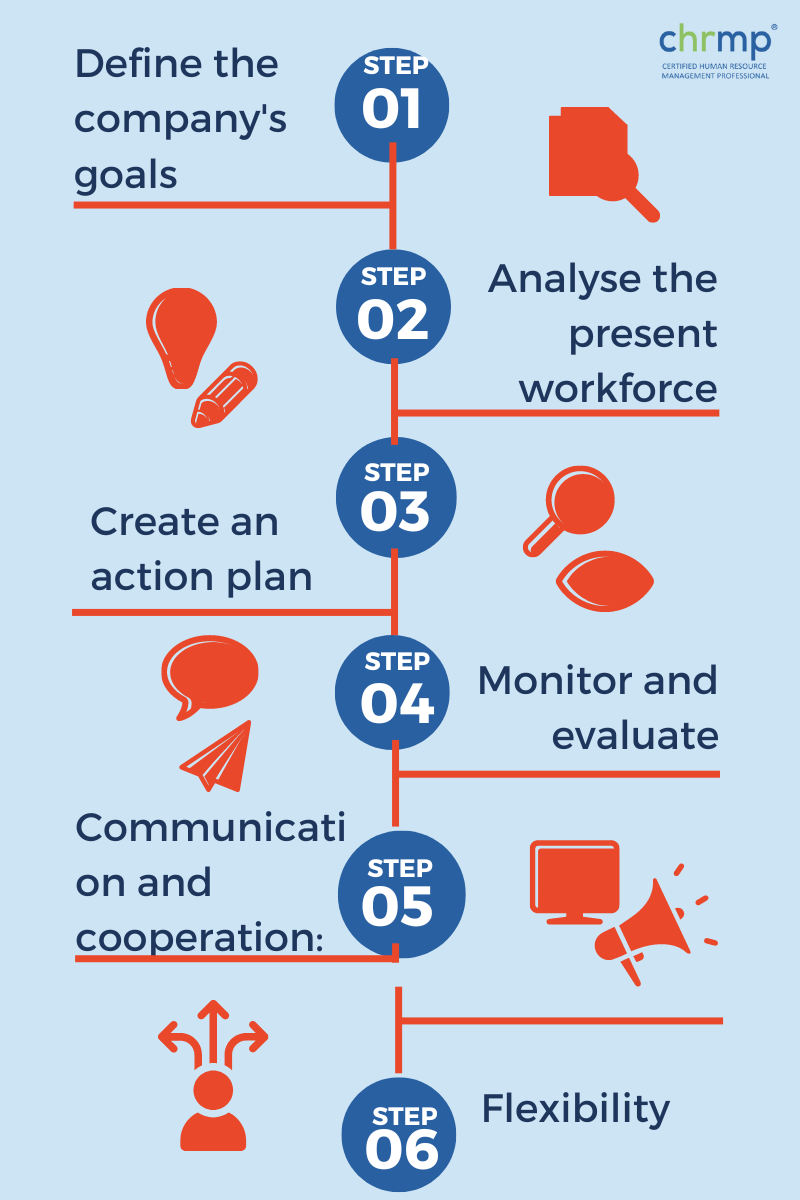

Every company owner is aware of the benefits of great hiring and the drawbacks of needing more qualified employees in the correct positions to service clients and foster expansion.
Even though headcount planning requires a lot of resources, the expense is well worth it because effective recruiting is essential to the success of every firm. How shall we here define “smart”? You choose eager employees to assist consumers, work cooperatively to achieve long-term and short-term goals, and advance the organisation’s expansion strategies.
Here’s how you put together a team that performs well.
The process of figuring out how many workers are required to achieve an organisation’s goals and objectives is known as headcount planning.
This involves making decisions regarding recruiting, firing, and other workforce modifications and estimating the number of workers needed to fill unfilled positions.
For the business to accomplish its strategic goals, headcount planning aims to guarantee that the appropriate amount of personnel with the appropriate abilities are in the relevant jobs.
Planning for headcount is done to ensure an organisation has the correct number of people working in the right positions with the necessary abilities to meet its strategic objectives.
This involves making decisions regarding recruiting, firing, and other workforce modifications and estimating the number of workers needed to fill unfilled positions.
A company may control labour expenditures, plan its headcount effectively, and guarantee that it has the resources to fulfil present and future business demands while minimising the effects of workforce changes on the business and its personnel.
Effective headcount planning may also assist firms in coordinating their staff with their overarching business objectives.
For headcount planning, you usually need knowledge of the company’s overall strategy and goals, the present and planned headcount, job responsibilities and needs, budget, and financial predictions.
Data on employee attrition and recruiting might be useful, as well as information on the external job market and the availability of talent in pertinent disciplines.
All relevant information and data should be considered to inform the headcount planning process and provide reliable estimates properly.
Planning for headcount is crucial in the company for a number of reasons, including:
Cost control: By precisely predicting headcount requirements, businesses may better control labour expenses and prevent costly overstaffing or understaffing.
Headcount planning helps firms allocate resources efficiently by determining how many workers are required to achieve particular goals and objectives.
Talent management: By comprehending the abilities and credentials required for various positions, businesses may spot talent gaps and decide how best to hire and educate new hires.
Company expansion: Headcount planning is crucial for business expansion since it aids in identifying and preparing for the resources that businesses require to support new projects, initiatives, and growth strategies.
Legal compliance: Businesses are required by law to employ a particular number of people in various nations; failing to do so might result in penalties.
Employee engagement: By accurately predicting headcount requirements, firms can ensure that workers have the resources and support they need to succeed, which may increase employee engagement and retention.
Overall, headcount planning is a crucial procedure that aids businesses in successfully managing their staff and promoting overall company development.

Although they are closely connected, headcount planning and workforce planning are different.
Estimating how many workers a company will require in the future is known as headcount planning.
It usually focuses on how many personnel are required for each department or function and guides budgeting, recruiting, and layoff choices.
On the other hand, workforce planning is a more comprehensive process that entails anticipating the organisation’s workforce needs, including the necessary number of people and the skills, credentials, and experience for various jobs.
It also entails developing plans and strategies to fill any manpower gaps or shortages and to support the company’s general performance.
In conclusion, workforce planning encompasses various elements, including talent, skills, productivity, and the overall workforce strategy. Headcount planning is one of these elements.
Supporting current and future company goals is the key advantage of headcount planning. When a company succeeds in headcount planning, they often reap the following rewards:
Better budget forecasting is possible because headcount planning enables companies to foresee how many people they will require in the future.
Better resource allocation: Organisations may distribute resources more effectively if they know how many and what kind of person they will need in the future.
Better talent acquisition: Organisations may use headcount planning to determine the talents and expertise they will need in the future, which can guide their recruiting and hiring efforts.
Enhanced organisational structure: A better organisational structure may be created by a company with the use of headcount planning in order to meet its goals and objectives.
Increased employee retention: Organisations may improve employee engagement and retention by creating a more favourable work environment with a clear grasp of their staffing needs.
Better Succession Planning: Organisations may more successfully prepare for critical employee transitions, retirements, and promotions by comprehensively grasping their future workforce needs.
Improved decision making: Better strategic decision-making and workforce planning are possible for firms when they have a clear picture of the future workforce.
Better cost management: Cost management is improved because firms may prevent overstaffing or understaffing, which can lead to unforeseen expenses.
The most apparent benefit of headcount planning for startups is that it assures that you are employing new workers to meet your growth objectives.
This assumes that you want to expand (sort of the goal, right?). Individuals who can drive income from sales and marketing as well as people who can provide your product or service to clients are needed to deliver that growth.
Instead of just filling vacancies as they appear, headcount planning guarantees that you employ strategically and in line with your company’s development objectives.
Being proactive rather than reactive is key.
However, there are a few additional advantages to headcount planning.
Better Budgeting
Making informed budgetary decisions and ensuring you have the available cash flow to meet these hiring needs are made possible by having a map of all the roles you need to hire for, when you’re going to hire, and the costs associated with that (such as job advertisements, recruitment agency fees, training and onboarding costs).
Plus, you’ll be able to precisely budget for this investment since you’ll know exactly what equipment you need to buy (such as computers, desks, and office chairs).
Efficiency of Cost
Several staff hired at once can save money in many different ways.
For instance, if your headcount planning process reveals that you need to employ three new sales representatives, you’ll save money since you’ll only need to run one advertisement and may even be able to schedule training for all the representatives at the same time.
Better Arguments for Funding
A clear organisational chart and list of the positions you need to fill can show that you have a strategic goal for the business and a plan for attaining it if, like many startups, you want to approach investors and get some capital.
Be ready to comply
As your employee base increases, your duties as an employer alter.
For instance, the Affordable Care Act (ACA) in the United States mandates that businesses with 50 or more employees offer reasonably priced group health insurance.
By beginning with headcount planning, you may successfully prepare for developments like these rather than discovering you’ve reached a crucial threshold all of a sudden.

Define the company’s goals: Determine the corporate objectives and goals that the headcount strategy should serve. This will make it easier to ensure that the strategy aligns with the organisation’s overarching strategic direction.
Analyse the present workforce: Examine the workforce to determine its size, skills, experience, and output. Find any gaps or areas of overstock in the present workforce using this data.
Future labour requirements should be predicted using company objectives and an examination of the present workforce. This includes figuring out the quantity of workers needed, the qualifications and experience needed, and the scheduling of the hires.
Create an action plan: Based on the anticipated workforce requirements, create an action plan outlining the activities the business will take to hire, train, and retain the required personnel.
Monitor and evaluate: Continually check in on and assess the headcount plan to see if the anticipated outcomes are being achieved. As necessary, make changes to the plan to keep it in line with the aims and objectives of the company.
Communication and cooperation: Share the headcount plan with all pertinent parties and work together to get their support and ensure that it is properly understood.
Flexibility: It is important when planning your headcount since unanticipated occurrences like economic downturns, natural catastrophes, pandemics, etc., can have a significant influence on your labour requirements. Be ready to modify your plans if necessary.
There are numerous crucial actions to consider when preparing for business staffing and growth:
Determine the aims and goals for the expansion of your business. This will enable you to estimate how many additional workers you’ll need to bring on board to meet those objectives.
Create a budget for recruiting and educating new hires. This will assist you in estimating the amount of cash you’ll need to set aside for recruiting and training expenses.
Establish a strategy for finding and employing new personnel. This has to involve defining the roles you need to fill, where you’ll look for individuals, and how you’ll screen and interview applicants.
Create a new employee onboarding procedure. This will make sure that new hires receive the necessary training and integration within the business.
Track and assess your plan’s development. You may then make the necessary modifications to make sure your business can achieve its headcount and growth objectives.
Instead of making permanent personnel, think about growing your staff by using contractors or freelancers for certain tasks; this would be a more affordable option.
As the market and your business are subject to change over time, keep track of your headcount and growth on a frequent basis and make sure to adjust your goals and budget accordingly.
This problem affects a lot of founders. What comes first?
Securing and retaining the ideal candidates.
Internal career development and succession planning to ensure you keep the best talent.
Designing a hierarchy and a learning and development strategy.
The area of workforce planning is broad, and your choices will all have an effect.
Your culture, corporate objectives, and desired employee experience will all play a significant role in this.
However, everything actually comes back to the first query: what abilities do we as a corporation need to succeed?
Additionally, this may alter over time and will do so.
The decisions you make when it comes to workforce planning are supported by maintaining a continual pulse on the answer to this question.
Above all else, it’s critical to keep in mind that people are what really matter in business.
You already know that your product won’t develop, produce, or market itself.
Your employees are your most precious resource, even while it may be difficult to understand the benefits and worth of workforce planning in the near term.
The key to long-term success is a dedication to making plans for how to recruit, engage, hire, retain, and grow your team.
It is very important for an organisation to efficiently do all of the above. As an HR professional this falls under your lap. To make these tasks smoother consider doing an HR certification course. To know more visit www.chrmp.com
1. How do sales leaders plan their headcount?
Sales managers factor the following factors into their headcount planning:
a. Identify sales goals and objectives: To calculate how many salespeople are required to meet the company’s revenue targets and sales goals, sales management must first identify the company’s sales goals and objectives.
b. Examine the current sales pipeline to identify any blockages or locations where extra salespeople are required. Sales executives must evaluate the current sales pipeline to identify these issues.
c. Take the sales process into consideration: Sales managers must think about the sales process and the number of salespeople required at each stage, including lead generation, qualifying, closing, and account maintenance.
d. Create a budget: Sales executives must create a budget for recruiting and educating new salespeople as well as for any extra supplies needed to support them.
e. Create a recruitment strategy: Sales executives must create a recruiting strategy that specifies the kinds of salespeople that are required, where to find them, and how they will be screened and interviewed.
f. Track progress: In order to accomplish sales goals and objectives, sales executives must track and analyse the progress of the sales force and make necessary adjustments to headcount.
g. Monitor market changes: Since the market and the business’s sales objectives may vary over time, sales executives must monitor market changes and modify the headcount strategy as necessary.
2. How to calculate headcount ratio?
To calculate headcount ratio, you would need to divide the number of employees in a specific department or division by the total number of employees in the company. This ratio will give you a percentage that represents the proportion of employees in that department or division compared to the total headcount of the company.
Example:
If a company has 100 employees in total and 25 of them are in the sales department, the headcount ratio for the sales department would be 25/100 = 0.25 or 25%.
It is important to note that headcount ratios can be calculated for different departments or divisions within a company, and can be useful for comparing the relative size of different teams or identifying areas where the company may need to adjust its staffing levels.
Also, headcount ratios can be used to measure different departments’ productivity, efficiency, and cost-effectiveness. For example, a higher headcount ratio in the sales department may indicate that the company is placing a greater emphasis on sales, while a lower ratio in the administrative department may suggest that the company is trying to keep administrative costs low.
3. What constraints should be placed on headcount growth in a rapidly growing startup
There are a number of restrictions that should be put on headcount growth in a startup that is expanding quickly in order to make sure the business can maintain its growth and prevent possible problems including overhiring, overspending, and inefficiency:
Financial limitations: It’s critical to understand the company’s financial status and to make sure that headcount growth is in line with the company’s budget and cash flow. It’s also important to have a clear understanding of the costs associated with hiring and training new employees, and to make sure that these costs are factored into the headcount growth plan.
Organisational constraints: A rapidly growing startup should also be mindful of the organisational structure and the need to maintain a balance between the different departments and teams. Hiring too many employees in one area can lead to an imbalance and create issues with communication, coordination, and decision-making.
Scalability: The company should also think of the scalability of the business, and make sure that the hiring process is aligned with the company’s long-term goals, and that the company is able to sustain the growth in the long run.
In order to guarantee that the business can continue its development over time, a quickly expanding startup should carefully plan personnel expansion while keeping in mind the financial, operational, market, organisational, and scalability restrictions.
4. What does headcount freeze means in HR Terms? |
A temporary halt in recruiting new personnel inside a corporation is referred as in HR parlance as a “headcount freeze.” This implies that no new roles will be established until the hiring freeze is removed or new employees hired. Since employing new personnel may be expensive in terms of recruiting and training expenses, headcount freezes are frequently applied as a cost-saving solution.
The business could also demand that open positions remain unfilled until the headcount ban is removed or that current workers take on extra tasks to compensate for the lack of new hiring. A temporary decrease in the workforce, either through layoffs or a reduction in hours, may occasionally be part of the headcount freeze.
Headcount freezes can negatively impact employee morale, making workers feel uneasy and unsettled. Additionally, as the organisation might need more staff or resources, it may be unable to accomplish its goals and objectives.
It’s crucial to remember that a headcount freeze should only be employed as a temporary solution and that the employees should be fully aware of it. The business should also have a strategy for managing the workload throughout the freeze and for lifting the freeze once things start to get better.
© 2007-2025 CHRMP| All Rights Reserved | Powered by Ripples Learning & Research Private Limited
